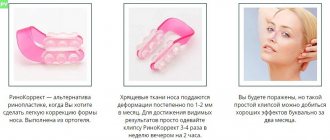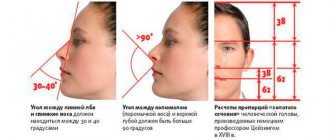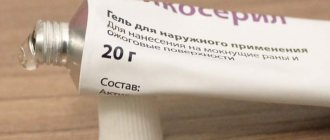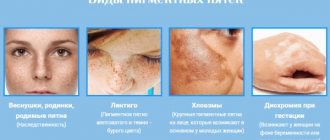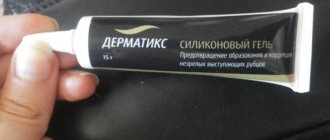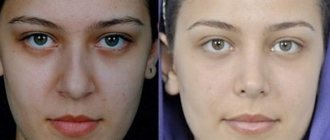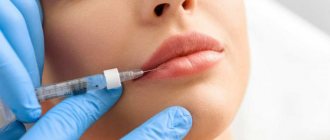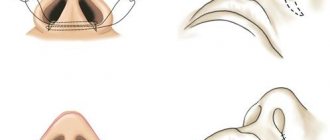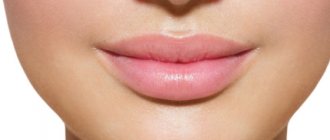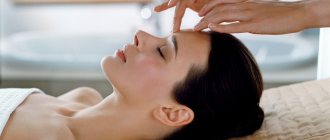Nose reduction using lipolytics is a fairly painless, low-traumatic alternative to rhinoplasty, helping to solve the problem of a “fleshy nose” or asymmetric structure of the respiratory organ. The technique effectively destroys fat deposits is successfully used in all beauty salons in Russia and the world and helps to give the nose an elegant and sophisticated look, and, according to reviews, it tightens the tissue well, restoring a fresh and youthful appearance to the face.
What are lipolytics
Lipolitics are synthetic substances that promote the breakdown of fat deposits in different parts of the body. Once inside the cells, they promote the removal of fat mass through the lymph flow, while simultaneously correcting the desired part of the body.
In addition to body correction, lipolytics are also used to correct the shape of the nose, helping to combat excess volume of the respiratory organ by relieving swelling and reducing the thickness of the subcutaneous fat layer.
Lipolitics contain:
| Licithin | A safe, natural component that helps the body process and quickly eliminate fats. |
| Sodium disoxylate | A component of bile that increases the permeability of the cell membrane and turns fatty tissue into a liquid emulsion that is easily removed from the body. |
| Nutrients | Vitamin-mineral complex, peptides and antioxidants that suffocate the structure of the skin and activate regeneration processes. |
Lipolytics injected directly into adipose tissue were first used in 1980, and since then the cosmetic procedure has undergone a number of significant changes, becoming virtually painless and completely safe.
Laser nose correction: how does it work?
Laser rhinoplasty of the nose allows you to perform the operation more accurately and quickly using a beam. The advantage of a laser is that in the hands of an experienced surgeon it cuts tissue easily and with minimal consequences for human health. This makes the rehabilitation period easier for the patient, since the postoperative consequences will be less pronounced.
But dissection of soft tissue is not the only function of the device. Essentially, it has multiple directions and allows you to:
- Seal the vessels in the operated area.
- Disinfect the wound.
- Stimulate cell regeneration.
- Soften cartilage tissue.
When talking about disinfection, we primarily mean a non-contact method of exposure. And taking into account the heat treatment of the surgeon’s intervention area, it is almost impossible to get infected during such a procedure. And the softening of the cartilage tissue leads to the fact that giving a new shape to the nose is simpler, easier and without unnecessary trauma.
As a result, the operation and subsequent recovery are accelerated. Even with the most complex defects, laser nose correction is easier and more effective. This is especially true for such complex cases as a complete “reconstruction” of the septum. With this correction, it is easy to remove the hump from the nose. Using this method, not only does the process speed up, but also the pain after the procedure is significantly reduced.
How do lipolytics work?
Reducing the nose with lipolytics (reviews of the use of drugs are given below in the article) is based on the reactivation of certain processes in the body:
- Increased cellular pressure, gradually softening the structure of the protective membrane.
- Converting subcutaneous fat into a liquid emulsion.
- Removal of accumulated waste products by the lymphatic system, along with fat mass.
Additionally, a vitamin-mineral complex and antioxidants contained in the preparations:
- stimulate blood flow;
- activate tissue regeneration processes;
- improve cellular metabolism and strengthen the skin framework.
The broken down fat deposits leave the body within a few days, making the shape of the nose thinner and more graceful.
Unfortunately, the use of lipolytics is only possible in the case of a large amount of adipose tissue. Drugs simply cannot correct the irregular shape of the respiratory organ, since they do not affect the bone structure.
Types of lipolytics
To reduce the volume of the nose, use:
- Direct lipolytics that do not act on the cell itself, but only on its membrane and are characterized by very strong warming properties.
- Indirect, not leading to strong correction, but helping to improve the condition of the skin. Such preparations are plant-based and contain caffeine or artichoke root extract.
In addition to lipolytics, during the procedure, to consolidate the result, medications are additionally used to help remove broken down fatty acids. The use of direct lipolytics allows you to get tangible results after 2-5 procedures. Indirect - requires from 3 to 11 injections.
List of the best drugs:
| A drug | Description |
| Dermaheal LL | A direct-acting drug from South Korea, used to correct the shape of the nose and facial contours. Thanks to the additional content of the peptide complex, it promotes faster cell division and also helps maintain youthful and healthy skin. |
| Super V-Line Sol | Indirect, Korean lipolytic containing horse chestnut extract, L-carnitine, tyrosine. |
| Lipo Lab V-Line | An indirect-acting herbal lipolytic containing plant extracts, niacinamide and pitides. In addition to the reducing effect, it also helps fight skin aging, eliminate jowls and a double chin. |
| Aqualyx | Italian direct lipolytic made from sodium deoxycholate and galactose polymer. The drug, which has received Russian certification, is successfully used in cosmetology, allowing you to eliminate up to 35% of fat deposits without damaging tissues. |
| PBSerum | Indirect lipolytic of Spanish origin, containing Lipase PB 500 and not hormone sensitive. |
| Estetic Form "Lipo Stop" formula | Made from caffeine, L-carnitine and flavonol, indirect lipolytic of Russian-Italian origin. |
| MESOSCULPTTM C71 | An innovative drug of American-Korean origin that helps not only melt fatty tissue, but also stimulate its conversion into healthy fat for the body. In addition to active substances, it contains hyaluronic acid and a vitamin and mineral complex. |
| Leister Vector | A German indirect lipolytic made from caffeine, L-carnitine and vascular-draining substances helps break down triglycerides without damaging fat cells, and also has a lymphatic drainage effect. |
| Revital Celluform | Direct lipolytic, containing phosphatidylcholine, sodium deoxycholate and antioxidants, which allows you to quickly reduce fat deposits on the face. |
Types of fillers used
Before using a particular drug, the specialist focuses on the amount of hyaluronic acid it contains. In this matter, the principle “the more the better” does not work, since a specific drug is selected for each specific case. After a large number of studies, it was found that the optimal concentration of hyaluronic acid in filler is 22 mg per 1 g of the drug.
There are two types of such fillers - monophasic (Juviderm, Surgiderm, Revanesse, etc.) and biphasic (Perfectha Derm, Restylane, etc.).
These types of fillers differ in properties such as elasticity and viscosity.
Monophasic gels are typically used to correct minor blemishes and are composed of particles of equal size, allowing the gel to distribute evenly under the skin, creating a natural-looking effect. They are distinguished by their relative ease of use: it will not be difficult for a specialist to introduce such a gel under the skin, and, after administration, it is easy to distribute by simply touching the skin with your fingers. Some monophasic fillers contain an analgesic, which can eliminate pain in patients with sensitive skin. Another advantage of such gels is that when their period of action comes to an end, the effect disappears evenly throughout the nose.
Biphasic gels are aimed at solving more serious problems, such as changing the shape of the back and tip of the nose. However, in work they are more “capricious” than monophasic ones. Due to their consistency, the process of introducing them under the skin is complicated, and distributing the gel in the right directions is a longer and more labor-intensive process. In most cases, only 70% of the injected biphasic filler will take root, so correction will be required after some time. However, such gels have a significant advantage - the effect of their use lasts longer than when using monophasic fillers. If the correction is carried out in time, the result can be admired for up to 1.5 years, otherwise – up to a year.
Pros and cons of rhinoplasty with lipolytics
Reducing the nose with lipolytics (reviews from women who decided to undergo the procedure note the low pain of the injection technique, easily relieved with the help of an anesthetic gel) has a number of both pros and cons:
| Benefits of the procedure | Disadvantages of lipolytics |
|
|
Description of the procedure
Before the session, good clinics perform computer diagnostics, during which the doctor simulates the approximate result of the procedure. This is very convenient, since the patient can make his own adjustments on the monitor screen in advance if something does not suit him, and agree with the doctor on all the important nuances before the process begins. The nose correction itself with fillers takes approximately 30-45 minutes.
Preparatory stage
No special preparation is required. After a consultation, during which a medical specialist examines and selects the optimal medications, you can proceed directly to the session, or agree on the day when it will be held. It is necessary that the patient does not drink alcohol for two days before the procedure, and also does not take Aspirin and other medications that contain it.
The course of the procedure and injection technique
Non-surgical rhinoplasty is performed exclusively on an outpatient basis by a dermatocosmetologist or plastic surgeon. It is very important to make sure in advance that the doctor is certified, and also find out the expiration dates of the medications used. Packages are always opened in front of the patient. It is necessary to fill out the procedure passport, which indicates the name of the filler, volume and placement scheme.
First, the skin of the nose and cheeks is cleaned with an antiseptic. Then pain relief is carried out, for example, with Emla cream. After about 15 minutes, when the analgesic begins to act, the doctor can begin to inject the gel into the previously marked areas. The volume of the composition used is usually minimal and, as reviews indicate, does not exceed 2 ml. The person does not feel discomfort, only in some cases there may be a barely noticeable burning sensation. When the filler is introduced, the skin is re-treated with an antiseptic composition, and a cold pack may also be applied to help prevent the formation of severe swelling.
The injection schedule is as follows:
- To raise the tip, filler must be injected into the membrane located between the nostrils.
- You can correct a hump by injecting the composition into two holes - the bridge of the nose and the middle of the back.
- Wide wings can be corrected, the architecture of the nasal openings can be corrected, and symmetry can be restored by introducing filler into the points of the nostrils.
- You can narrow your nose by making a puncture in the middle of the back, and then distribute the drug along a vertical line.
Indications for use
Reducing the nose with lipolytics is indicated in the following cases:
- defects in the shape of the nose;
- the appearance of sagging skin.
The effect of the drug is most effective in the formation of a congenital “fleshy nose”, which has a wide back filled with fatty deposits, and also has congenital or acquired skin folds.
Since there are few fat deposits on the face, a good effect from the procedure will be noticeable only in obese people. For everyone else, it is possible to smooth out skin creases and appear a little graceful, but for a more pronounced result, rhinoplasty will be required.
Additionally, along with correcting the shape of the nose, the introduction of lipolytics will help cope with the appearance of:
- double chin and sagging skin;
- formation of jowls;
- accumulation of fat near the cheeks;
- swelling of the oval of the face.
Instructions for use
The clothespin is quite easy to use. However, misuse is common. Many patients do not have the patience to perform therapeutic manipulations on their nose day after day without interruption. But only a systematic approach to solving the problem will help achieve the desired effect.
Instructions for use consist of several simple steps. You need to put the rhinocorrector on your nose with the open part down. Leave for 20 minutes to 2 hours, after which remove the clothespin. This manipulation must be repeated daily. The procedure can be stopped once a lasting effect is achieved. As the manufacturer promises, it will be noticeable after 1-2 months of use.
The main condition is regularity. But there is no need to overdo it, since the splint in any case slightly compresses the tissue and thereby slows down blood circulation. Therefore, pain and other unpleasant symptoms may develop when using the device for more than two hours.
Indications for use
Serious cosmetic disorders (severe asymmetry of the nostrils, a cartilaginous hump, a pointed tip that hangs down strongly) can only be changed by a plastic surgeon. Even innovative hardware methods for correcting flaws are powerless. A splint for correcting the shape of the nose cannot replace rhinoplasty, but it is completely capable of smoothing out minor defects and making the shape of the organ more refined and elegant.
Main indications for wearing a clip:
- curvature and irregular shape;
- wide “potato” nose;
- the result of traumatic influence with deformation of the nasal septum or wings;
- hump;
- loose skin;
- age-related “blurring”;
- slight difference in the shape of the nostrils.
When using it, you can count on straightening and narrowing the back, raising the tip of the nose, smoothing humps and sharp corners, slightly reducing the length and correcting slight asymmetry. The corrector does not cure snoring.
How to wear a clothespin
Improper use of a nose clip leads to a lack of results and can even cause unpleasant consequences (pain, redness). The clip must be fixed in such a position that its side parts fit comfortably against the wings of the nose and are placed closer to their middle. That is, the jumper should be located between two parallel “antennae” and lay on the back of the olfactory organ. If there is a hump, the jumper must be placed on top of it.
How long a day should you use concealer?
The splint must be worn for a long period. Depending on the complexity of the correction and the possibility of up to two hours from 1 to 4 times a day for 1-4 months. It is recommended to carry out the procedure daily or every other day. To achieve the desired effect, you need to be patient and persistently move towards the goal.
Duration of the course until results appear
Efficiency depends on the pathology, its severity, and the denser the tissue that needs to be corrected, the more difficult and longer the treatment process. If you believe the manufacturer's promises, initial results are observed after about a month of constant and correct use. Gradually pressing the skin and cartilaginous area of the organ, the clothespin changes its shape to 1-2 mm per month.
Contraindications for use
Any manipulation has a number of contraindications. It is necessary to consult with an ENT doctor or surgeon before using a rhinocorrector. In case of a fractured nasal septum and severe injury, only rhinoplasty will help. For any facial injuries, the clip cannot be used until complete healing, so as not to complicate the health condition.
The presence of nasal diseases is considered a limitation to the use of a splint:
- sinusitis;
- runny nose;
- frontal sinusitis;
- sinusitis.
The use of a clip during the acute period of the disease is strictly prohibited. If the pathology is chronic, you should wait for remission. Also, the clothespin is contraindicated for infectious, inflammatory, and fungal skin diseases.
Possible Undesirable Consequences
When worn, a splint can provoke the development of unpleasant sensations. Users' noses are sore, congested, itchy, and they want to quickly remove it. Clothes pinning causes unpleasant symptoms when the quality of the product is poor or it is used incorrectly.
Similar devices for correcting the shape of the nose
Correction of the olfactory organ can be performed with three different devices. The choice and preference depends on the defect and severity of the pathology. Correctors used include: splint, clothespin, massager, electric exercise equipment. They have different appearances, but are created for one purpose - correcting the shape of the septum and nostrils.
Contraindications and age restrictions
The use of lipolytics is contraindicated for:
- oncological neoplasms;
- pregnancy and breastfeeding;
- exacerbation of the herpes virus;
- individual intolerance to the constituent components of the drug;
- diseases of the cardiovascular system;
- acute renal failure;
- varicose veins and increased thrombus formation;
- pathologies of the thyroid gland;
- tuberculosis;
- fresh skin lesions at injection sites;
- acute respiratory and infectious lesions;
- HIV infections;
- epilepsy;
- increased tendency of the patient's skin to form colloidal scars.
Correction with lipolytics is also not carried out in the event of a febrile state caused by an increase in body temperature and sudden jumps in blood pressure. It is prohibited to prescribe lipolysis to children under the age of majority.
Indications and contraindications
It is clear that any medical or cosmetic procedure must have its own indications and contraindications. Indications for contour plastic surgery include aesthetic defects:
- Asymmetry of the nose;
- Hump;
- Depressions, irregularities, failures;
- Defects resulting from injury;
- Descent, bifurcation of the tip.
There are a number of other aesthetic indications.
The main factor in general remains precisely contraindications. If any are detected, the doctor has the right to refuse to perform contour correction of the nose. In this case, it makes no sense to look for another doctor, since the refusal was made for a number of justified reasons, including the long-standing slogan of doctors around the world “do no harm,” because nose surgery with obvious negative factors can lead to a large number of complications. Contraindications include:
- If you have a large and long nose, contouring cannot be done for one simple reason - it will only add volume. The injection substance does not shrink the nose.
- Infectious diseases of various etiologies;
- Oncology;
- Diabetes;
- Chronic diseases in the acute stage;
- Skin diseases in the area of manipulation;
- Diseases of internal organs in the acute stage or their severe damage;
- High blood pressure;
- Mental illnesses.
In general, contraindications are typical for any type of rhinoplasty. If none are found during the examination, then preparations begin for nose correction with injections.
Preparation for the procedure
Unlike rhinoplasty, special preparation is not required for correction with lipolytics. A regular visit to a cosmetologist will be enough to establish a work plan and select the necessary drug.
During the conversation, the cosmetologist also:
- will conduct a preliminary inspection and take the necessary measurements;
- learns about the general condition of the patient and the presence of chronic pathologies and allergic reactions;
- will tell the client about the procedure itself, its duration, expected results and possible side effects.
Experts also advise a few days before the procedure to avoid:
- drinking alcoholic beverages;
- fatty, processed and fried foods;
- smoking;
- taking antibiotics and other medications that thin the blood.
Carrying out the procedure
Reducing the nose with lipolytics (reviews from women who have undergone the procedure note an excellent opportunity not only to reduce the volume of the nose in a few sessions, but also to tighten and even out the skin of the face) usually takes from 3 to 7 sessions (depending on the choice of drug) performed with a break of 10-11 days. The duration of one procedure varies from 30 minutes. up to 1 hour
There are 2 options for correction:
Injection technique
The most effective way to administer lipolytics, delivering a nutritional cocktail directly to the area of the fat cell. Injections are prescribed for quick results, as well as in cases of contraindications and the impossibility of performing laser procedures.
Lipolytic injections are performed under local anesthesia.
Progress of the procedure:
- Makeup removal and skin cleansing.
- Apply antiseptic gel to the corrected area.
- Injection of lipolytics with special needles.
- Treating the injection site with soothing and moisturizing creams.
Non-injection use of lipolytics
Thanks to ultrasonic devices, creams and cocktails with lipolytics can be applied directly to the surface of the skin. For such correction, iontophoresis is used, which evenly distributes the lipolytic over the surface of the tissues without at the same time injuring them. Absorbed into the skin, the drugs reduce the amount of subcutaneous fat and tighten the contours of the face, but are less effective than the injection technique.
Rehabilitation period
After the correction, the patient should drink at least 1.5 liters of liquid to improve lymph and blood flow, and also try to relax as much as possible and limit mental and physical stress.
In the following days, you will also have to observe a strict drinking regime, and after the skin has been restored, the client is given a lymphatic drainage massage of the face and the treated area, which helps to more quickly remove the breakdown products of adipose tissue from the body.
After the session follows:
- Avoid eating any food for 2-3 hours.
- Don't take a hot bath.
- Avoid drinking alcoholic beverages for at least 10 days, and also do not smoke for at least 6-8 hours.
- Do not wash your face with hot water.
- Do not touch your face with your hands for 2-3 days and do not apply decorative cosmetics to your skin for at least 7 days.
- Avoid sports for 5 days.
- For a week, do not visit the pool and sauna, and also do not sunbathe or swim in open water.
By the end of the first day, swelling appears on the nose, which is considered completely normal and does not cause any concern. The time for swelling to subside is individual for each patient, but usually does not exceed 14 days.
To improve the condition of the skin and faster subsidence of swelling, it is recommended:
- apply cold compresses to the nose;
- apply ointments with a resolving effect to the skin: Troxevasin and Lyoton.
- Carry out an independent massage of the treated area.
- take a course of R-lifting or ozone therapy.
Laser nose surgery: rehabilitation
Although laser rhinoplasty is considered a less traumatic procedure, there is still a rehabilitation period. The recovery period consists of a certain set of measures aimed at rapid regeneration.
After correcting the nasal septum with a laser, there are two stages of the rehabilitation period:
- Early recovery . At this stage, prevention of wound infection after surgery is carried out. Such manipulations are performed until the stitches are removed. Also, until this point, you need to carry out daily dressings, treating with furatsilin. To reduce pain, the surgeon will prescribe special medications. The use of anti-inflammatory drugs will also be required; they will reduce inflammatory processes and accelerate tissue regeneration. To heal the incisions, you need to use ointments. The optimal solution would be Levomekol.
- Late recovery . It is carried out after the sutures are removed. The duration of this process is up to 1.5 months.
During late recovery, you will need to follow certain recommendations:
- eat only foods that are easily digestible;
- avoid increased physical activity;
- do not be exposed to direct ultraviolet rays;
- minimize the application of cosmetics so as not to provoke allergic reactions.
By following these recommendations, you will be able to speed up the recovery process after laser surgery of the nasal septum.
Side effects
Possible side effects of the procedure:
| Action | Effect |
| In case of incorrect selection of the drug formula. |
|
| When a lipolytic is injected into the muscle, and not into the subcutaneous fat. |
|
| Due to non-compliance with sanitary standards and violation of the rules of the rehabilitation period. | The appearance of a feverish state. |
The most common complications after the procedure are bruises, hematomas and a temporary increase in body temperature, which disappear on their own on the 7-14th day from the moment of drug administration. Nausea and dizziness occur much less frequently and can be caused by the patient’s individual intolerance to any drug.
If severe, painful complications occur, medical intervention is necessary.
Questions and answers about laser nose correction
Which method is considered better: surgical or laser?
Using a laser, it will be possible to make precise and ultra-thin cuts in the epithelium. This makes the breathing nose base pliable for future modeling. If volume changes in the nose are planned, including correction of the bone base, then it is better to use a surgical technique.
Do you experience any discomfort or discomfort during laser correction?
Since laser incisions are considered less traumatic, there is virtually no pain during the correction.
At what age is laser nose correction allowed?
Laser rhinoplasty of the nose is performed on patients over 19 years of age. At a younger age, the formation and development of the tissues of the respiratory organ is not yet completed.
Can laser rhinoplasty be repeated?
The laser can also be used for re-operation, but on the condition that the intervention will be carried out no earlier than 6 months from the date of the first rhinoplasty. But it is still recommended to consult with a specialist first.
Cost of the procedure
Reducing the nose with lipolytics (reviews from girls point out the unique opportunity to use drugs to tighten the shape of the nose and cope with wrinkles that spoil the face, disappearing after the session) is a rather expensive procedure, the cost of which directly depends on the salon and the drug used for injection.
| A drug | Price |
| Super V-Line Sol, Lipo Lab V-Line, PBSerum. | from 9000 rub. |
| Dermaheal LL | from 15,000 rub. |
| Aqualyx | from 6000 rub. |
| LIGHTFIT | from 5000 rub. |
| MESOEYE C71 | from 10,000 rub. |
The price of the course will cost approximately 50 thousand rubles.
Additionally, a nose lift with threads may be required, which costs from 10,000 rubles.
In modern cosmetology, lipolytics, although considered an innovative technique, have already proven themselves quite well in the beauty industry. Unfortunately, such drugs can only slightly correct the shape of the nose, but only rhinoplasty can completely correct the respiratory system.
Rhinoplasty – what is it?
To understand why it is better to give preference to the Rhinocorrect clip, you need to find out how the operation to correct the shape of the nose is carried out, as well as what its cost is. Rhinoplasty is a surgical procedure aimed at changing the size or shape of the olfactory organ. This operation is not recommended for boys and girls under 16 years of age. But the “Rinocorrect” product can be worn by these categories of people.
Rhinoplasty, the cost of which will be prohibitive for many people, can be performed closed or open. In the first case, the surgeon makes incisions in the nasal mucosa, and then the scars will not be visible. And in the second case, a trace remains in the form of a broken line at the place where the nostrils separate. This scar disappears over time.
Rhinoplasty is performed under general anesthesia. During the postoperative period, the patient must breathe through his mouth for some time, because gauze swabs will be in the nose for three days. Immediately after surgery, the person is given a plaster cast. After 2 weeks it is removed. Swelling begins to go away already on the third day after rhinoplasty, and bruises disappear within two weeks.
The process of final formation of a “new” nose after surgery can last from several months to a year. The olfactory organ may feel swollen for a while, and the tip of the nose may react to sudden changes in temperature after an operation such as rhinoplasty. The cost of this method of surgical intervention on the olfactory organ can range from 12 to 18 thousand rubles. The final price depends on the choice of clinic, the qualifications of the doctor, as well as the characteristics of the body and the complexity of the work.
Considering that rhinoplasty is far from a cheap method of nose correction, it is worth considering another method in which the olfactory organ will not be amenable to surgical intervention.
Duration of effect and advice from cosmetologists
Reviews of girls who have undergone nose reduction with the help of lipolytics note that the first effect of the procedure becomes noticeable after the first 3 sessions and, with the right lifestyle, can last for quite a long time.
Reducing the nose with lipolytics. Photos before and after
For patients who have undergone lipolysis, cosmetologists advise:
- lead an active lifestyle, invariably accompanied by a lot of physical exercise;
- eat right, including in your diet a large variety of vegetables and fruits that help improve the health of the body and maintain weight at the required level;
- get rid of bad habits, and also minimize the consumption of sugary carbonated drinks and alcohol.
Proper facial care is also of particular importance, requiring the mandatory use of cosmetics with hyaluronic acid, which helps prolong youth and good skin condition.
To consolidate the result, cosmetologists recommend repeating a course of injections after 7-8 months. Reducing the nose with lipolytics is a modern, fairly common technique that allows you to cope with minor defects of the respiratory organ without the use of traumatic rhinoplasty tissue.
Having a small list of contraindications and, according to reviews, maintaining the effect for quite a long time, the procedure will help to cope not only with the voluminous wings of the nose filled with subcutaneous fat, but also tighten the skin, removing creases that appear with aging or tissue injury.
Who needs surgery
Rhinoplasty, aimed at correcting the shape and size of the wings of the nose, is performed at the request of the patient. Naturally, the doctor will conduct a preliminary examination and determine whether there are contraindications to surgical intervention. But nostril reduction is carried out not only at the request of the person, but also for certain medical indications:
- overly wide or long wings of the nose;
- disproportionate shape and size of the nostrils;
- too thick skin in the area of the nose in question;
- retraction of the wings as a result of their injury;
- nostrils too wide;
- inharmonious size of the nostrils with the nose.
Disturbances in the appearance of the wings of the nose can be congenital or acquired. In the first case we are talking about intrauterine disorders of the anatomical structure of the skull, in the second about the consequences of unsuccessful surgical intervention, injuries and curvature of the nasal septum.
We recommend reading about rhinoplasty for nose reduction. You will learn about shortening options, indications for surgery, preparation and performance of rhinoplasty, results, and cost. Read more about revision rhinoplasty here.
